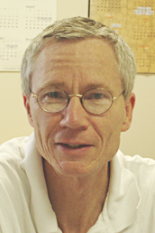MIPSE Seminar
Electron and Ion Heating, Acceleration and Energy Partition During Magnetic Reconnection

Magnetic reconnection converts energy into high-speed flows, and thermal and energetic particles in a broad range of systems both in the heliosphere and the broader universe. The most detailed measurements are in the heliosphere, an effective laboratory for many issues related to reconnection. While fast reconnection is now fairly well understood, the energy conversion mechanisms and the partitioning between species are active topics of research. In solar flares the energy released is roughly equally partitioned between thermal particles and energetic components. In the magnetosphere and the lab, thermal ions carry the bulk of the released energy. Models and simulations are advancing the physics of both relativistic and non-relativistic reconnection. Most of the energy conversion takes place in the exhaust where newly reconnected field lines release their tension and during the merger of magnetic islands. The dominant energy gain is parallel to the local magnetic field and as a consequence significant anisotropy develops, which is likely to impact synchrotron signatures in astrophysical systems. Why the power law distributions that are typically seen in nature are produced remains an open question. Basic physics concepts will be emphasized.
James F. Drake is a Distinguished University Professor in the Dept. of Physics and the Institute for Physical Science and Technology at the University of Maryland (UMD), College Park. He received the B.S. (1969) and Ph.D. (1975) in physics from UCLA. Dr. Drake remained at UCLA as a post-doc before moving to the UMD first into a research position and since 1987 as a member of the teaching faculty. Early in his career Prof. Drake worked on the interaction of intense lasers with plasma but then switched his focus to plasma turbulence and transport and magnetic reconnection with applications in the laboratory, the heliosphere and the broader universe. His work on the mechanisms controlling fast magnetic reconnection and associated particle acceleration has been widely recognized in the laboratory, the space and astrophysical plasma communities. He is a Fellow of the APS and AGU and received the APS James Clerk Maxwell Prize for Plasma Physics.
 MENU
MENU 
